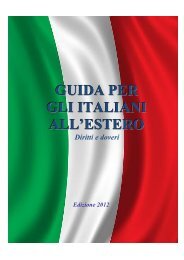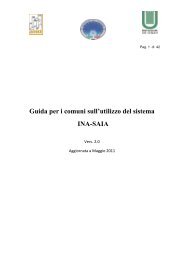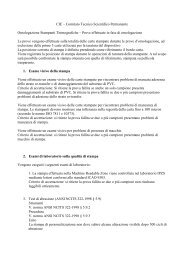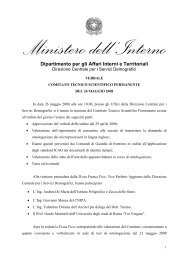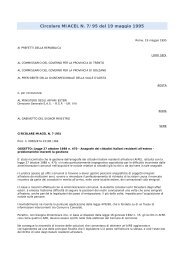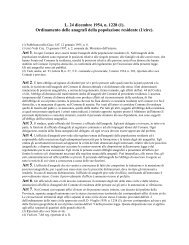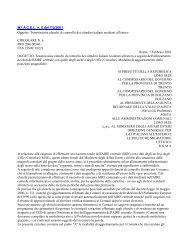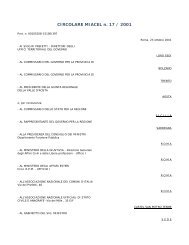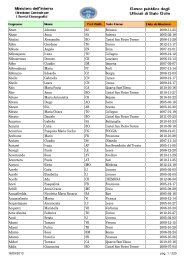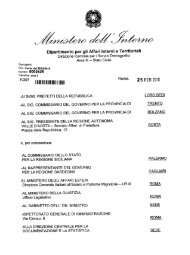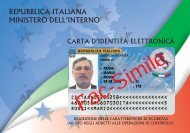C.I.E – Carta di Identità Elettronica Functional Specification Version 2.0
CIE - Functional Specification v 2.0
CIE - Functional Specification v 2.0
- No tags were found...
Create successful ePaper yourself
Turn your PDF publications into a flip-book with our unique Google optimized e-Paper software.
Record structure:The EF is seen at the interface as a sequence of in<strong>di</strong>vidually identifiable records.The following attributes are defined for record structured EFs.Size of the records: fixed or variableOrganization of the records: linear or cyclic structureThe following EF types are then used:EF Transparent: (also called binary files)EF Linear Fixed: linear EF with all records of a preset fixed size.EF Linear Variable TLV: Linear file with TVL structured records.EF Cyclic: Cyclic file with fixed record length.10.3 File System StructureThe file structure is usually shown using the tree (or hierarchical) representation. Here, the logicallayout of the file structure is shown so that one can easily find the path to a particular file. Thefollowing <strong>di</strong>agram provides an example of this type of layout.MFDF1EF1EF3EF2DF2Figure 1: ISO 7816 file system structureElementary Files can be referenced by their 2 byte File identifier (FID), while De<strong>di</strong>cated Files canbe referenced by their File identifiers (FID) or by the application name (AID) up to 16 bytes long.CIE allows at least a nesting level of 8 DF.CIE - <strong>Functional</strong> <strong>Specification</strong> v <strong>2.0</strong> -Page 23/76



